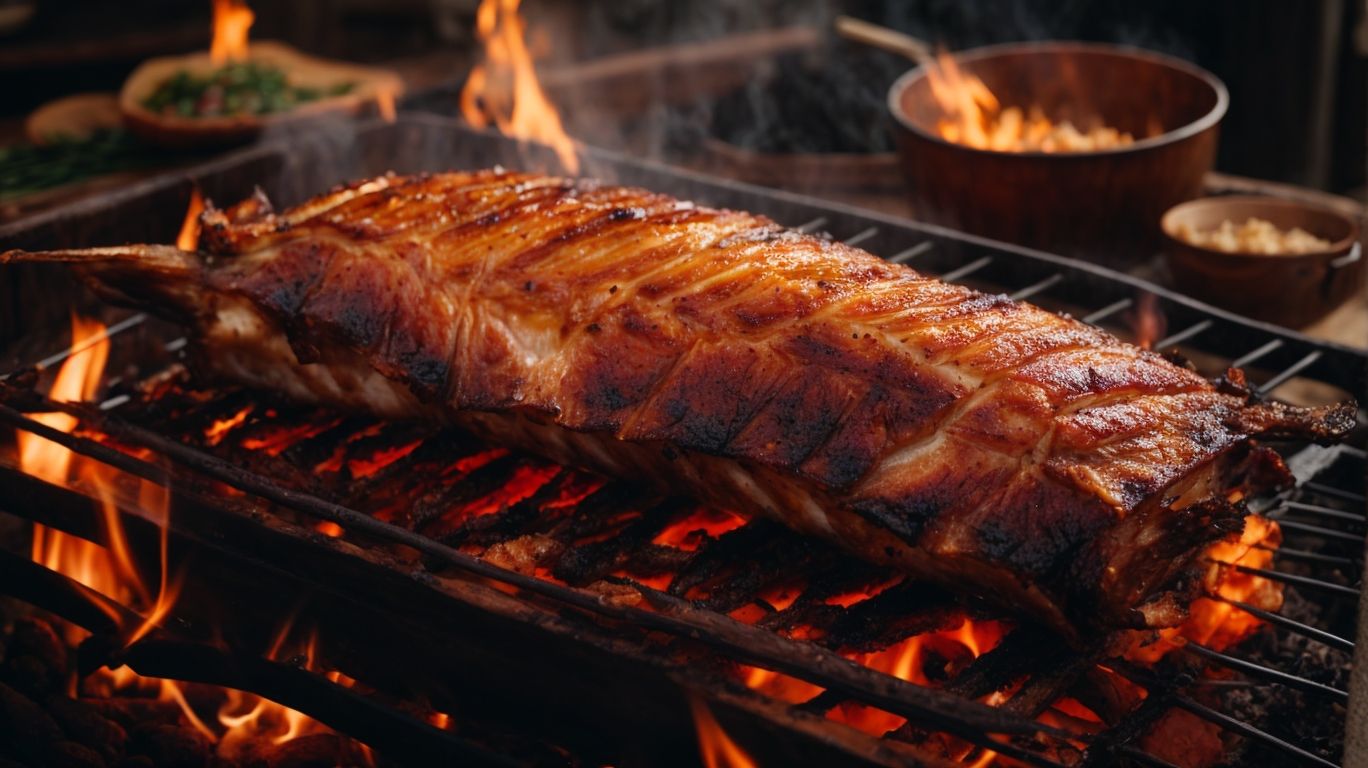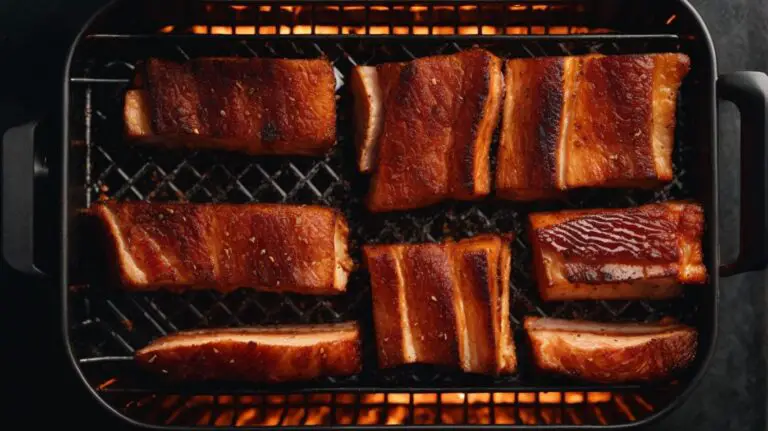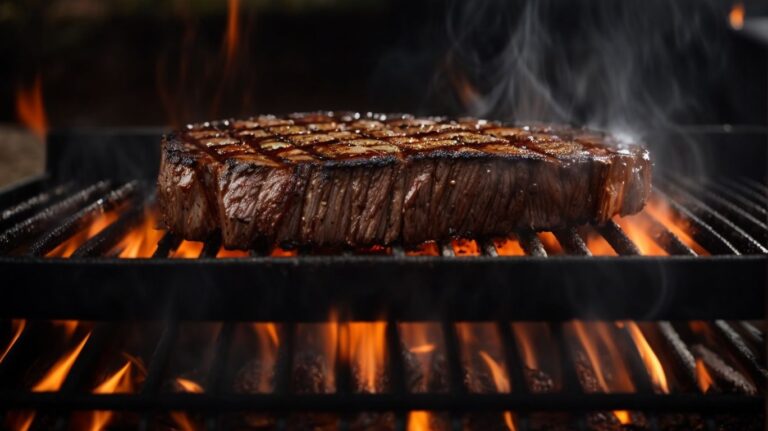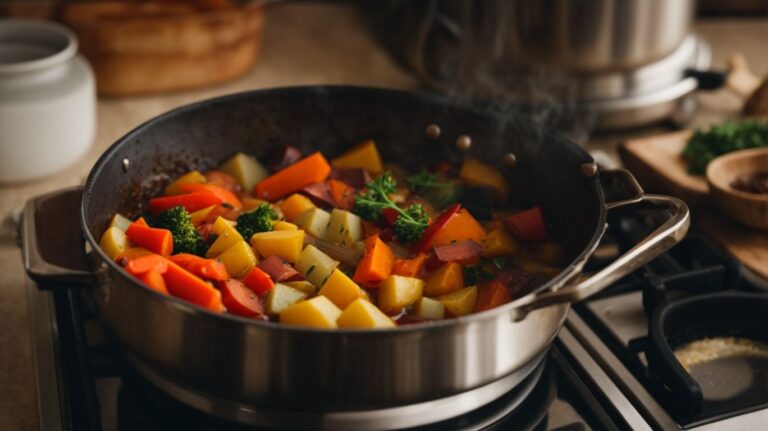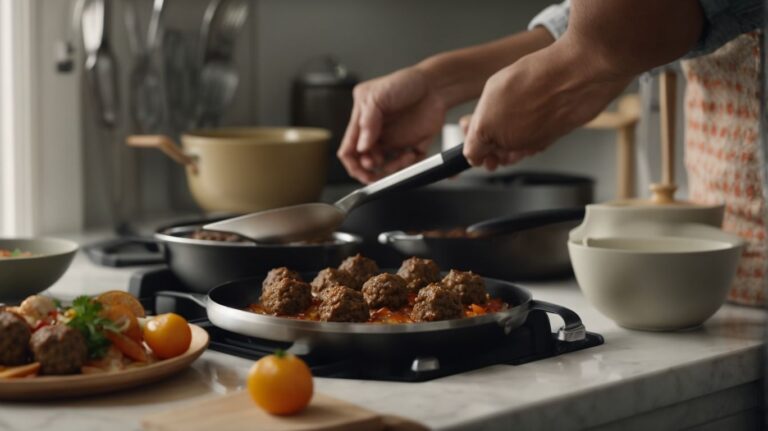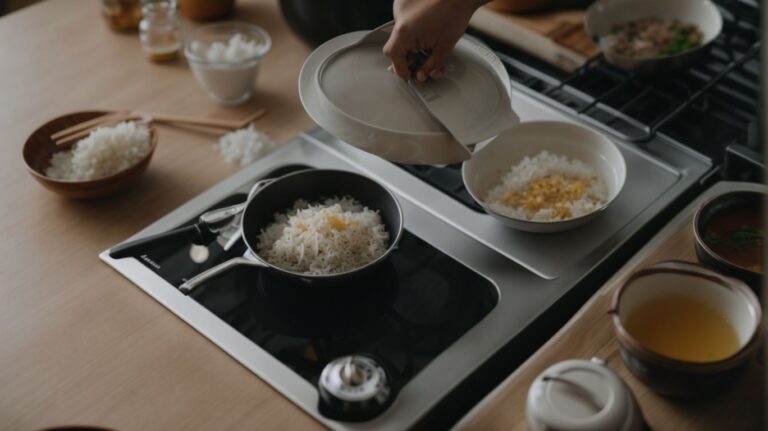How to Cook Lechon Belly Without Oven?
If you’re a fan of crispy, flavorful pork dishes, then you’ll definitely want to try making Lechon Belly.
We explore what Lechon Belly is, the key ingredients needed, the tools and equipment required, and how to prepare the pork belly for cooking.
We also delve into the different cooking methods for Lechon Belly, including grilling, roasting, and slow cooking. If you don’t have an oven, fear not – we’ll also share tips on how to cook Lechon Belly without one.
Get ready to learn how to make this delicious dish and impress your friends and family with your culinary skills!
Key Takeaways:
What Is Lechon Belly?
Lechon Belly is a popular Filipino dish known for its succulent roasted pork belly with crispy skin, offering a perfect blend of flavors and textures.
Originally derived from the Spanish word ‘lechón’, which means suckling pig, Lechon Belly is a culinary marvel deeply rooted in Filipino culture and celebration. Historically, this dish was prepared during festive occasions by spit-roasting a whole pig over a charcoal pit.
Sawsawan or dipping sauces are essential complements to the tender meat, often made from a mix of vinegar, soy sauce, spices, and Asin (salt) to enhance the natural juiciness of the pork.
Gradually, the traditional preparation evolved, resulting in a more manageable size with the flavorsome pork belly as the star, maximizing the crunchy skin and juicy meat for an irresistible taste sensation.
What Are the Ingredients for Lechon Belly?
To prepare Lechon Belly, you will need key ingredients such as Pork Belly, a blend of Seasonings and Spices, Vinegar, and Soy Sauce to enhance its flavor profile.
Another crucial element in making this delectable dish is garlic which adds a rich aromatic flavor and complements the meat perfectly. The acidity of calamansi juice helps tenderize the pork while providing a tangy kick to the overall taste.
For the cooking process, a Kawali or traditional Filipino wok is used to slowly roast the marinated Pork Belly until it achieves a crispy golden skin and tender, juicy meat inside. The methodical rotation and basting of the meat with its own juices contribute to the mouthwatering flavors and textures that Lechon Belly is known for.
Pork Belly
Pork Belly is the main protein component used in Lechon Belly, prized for its rich fat content that enhances the dish’s juiciness and flavor.
The succulent texture of Pork Belly, especially because of its marbling, creates a perfect balance between tenderness and crispiness when roasted for Lechon Belly. The layers of fat within the meat melt during cooking, infusing the dish with a luxurious moisture and savory taste that is unparalleled. To achieve the desired result, traditional Lechon Belly recipes often involve slow-roasting the meat to perfection, allowing the flavors to develop fully.
Seasonings and Spices
Seasonings and Spices play a crucial role in flavoring Lechon Belly, offering a symphony of aromas and tastes that elevate the dish to culinary excellence.
These key ingredients not only add depth and complexity to the Lechon Belly’s flavor profile but also bring out the best in the succulent pork meat, creating a harmonious blend of savory, spicy, and aromatic notes.”
Vinegar and Soy Sauce
Vinegar and Soy Sauce are essential components of Lechon Belly marinades, imparting tangy and savory notes that infuse the pork belly with depth of flavor.
Regarding marinating Lechon Belly, Vinegar plays a crucial role in tenderizing the meat, breaking down its fibers and resulting in a more tender and juicy end product. On the other hand, Soy Sauce brings in a rich umami flavor, adding complexity and depth to the marinade. The combination of these two ingredients creates a perfect balance of flavors, with the Vinegar providing a slight acidity to cut through the richness of the pork, while the Soy Sauce brings in a salty and savory element.
What Are the Tools and Equipment Needed?
To prepare Lechon Belly, you will require essential tools and equipment such as a Grill, Meat Thermometer, Aluminum Foil, and Kitchen Twine to ensure accurate cooking and optimal results.
These tools play crucial roles in the Lechon Belly preparation process.
- The grill, for instance, is essential for achieving that perfect charred exterior while ensuring even cooking throughout the pork belly.
- Using a Meat Thermometer is vital for monitoring the internal temperature of the meat, ensuring it reaches the desired level of doneness.
- Aluminum foil acts as a key tool in securing the moisture and flavor of the Lechon Belly during the cooking process.
- Kitchen Twine helps in tying up the belly securely for uniform cooking.
Grill
A Grill is a fundamental tool for cooking Lechon Belly, offering the smoky char and caramelization that defines the dish’s signature flavor profile.
Grilling Lechon Belly requires expertise in managing different heat zones on the grill to achieve the perfect balance of crispy skin and juicy meat. Whether using direct heat for initial searing or indirect heat for slow roasting, the grill plays a crucial role in creating that irresistible Lechon Belly texture and taste.
Grilling allows for flavor infusion through the use of aromatic wood chips, herbs, and marinades, enhancing the overall taste experience of your Lechon Belly dish. Pwede ka na mag-Lechon Belly and impress your guests with the mouthwatering results achieved only through the art of grilling.
Meat Thermometer
A Meat Thermometer is a critical tool when cooking Lechon Belly, ensuring that the meat reaches the optimal internal temperature for safe consumption and perfect doneness.
Using a Meat Thermometer allows you to accurately monitor the cooking progress of the Lechon Belly by inserting the probe into the thickest part of the meat, away from bones or fat.
It is essential to follow specific temperature guidelines for pork, with the USDA recommending an internal temperature of 145°F (63°C) followed by a 3-minute rest period before slicing.
Modern digital thermometers, like those anticipated in 2024, offer quick readings for precise cooking accuracy, ensuring that your dish is not only delicious but also safe to eat.
Aluminum Foil
Aluminum Foil is a versatile material used in Lechon Belly preparation, aiding in moisture retention, heat distribution, and flavor preservation during the cooking process.
When you wrap the Lechon Belly in Aluminum Foil, it acts as a barrier that effectively seals in the natural juices of the meat, resulting in a moist and succulent final dish. The foil also plays a crucial role in controlling the browning process, preventing the outer layers of the pork from getting too dark or burnt.
Aluminum Foil helps in ensuring that the Lechon Belly cooks evenly by distributing heat evenly around the meat, reducing the chances of uneven cooking and ensuring that every bite is perfectly done. Once the Lechon Belly is cooked to perfection, simply unwrap the foil to reveal a beautifully roasted piece ready to be served with delectable Sawsawan condiments.
Kitchen Twine
Kitchen Twine is critical for securing and shaping Lechon Belly, ensuring uniform cooking and presentation of the pork belly during the roasting or grilling process.
By expertly trussing the pork belly with Kitchen Twine, the meat retains its shape, allowing for even cooking and ideal browning. Whether you are preparing a traditional Lechon Belly or experimenting with different flavor profiles, the versatility of Kitchen Twine comes into play. It serves as a culinary tool that not only helps in cooking but also adds a decorative touch to your dish.
- When making Lechon Belly, Kitchen Twine simplifies the process of tying and shaping, enabling you to achieve that perfectly roasted masterpiece.
Remember, Pwede ka na mag-Lechon Belly once the twine is securely in place, ensuring that each bite is a delightful experience.
How to Prepare the Pork Belly for Cooking?
Before cooking Lechon Belly, it is essential to properly prepare the Pork Belly by cleaning, trimming excess fat, and marinating it with flavorful seasonings for maximum taste.
Begin by rinsing the Pork Belly under cold water to remove any impurities or remaining blood. Pat it dry with paper towels to ensure a good surface for seasoning.
- Next, using a sharp knife, carefully trim off any visible excess fat from the Pork Belly. Make precise cuts to maintain the shape and structure of the meat.
- For a delectable Sawsawan, create a mixture of soy sauce, vinegar, garlic, and spices to infuse the Pork Belly with rich flavors while it marinates.
This marinating process can significantly enhance the taste and tenderness of the meat when it is finally cooked.
Cleaning and Trimming
Cleaning and Trimming the Pork Belly is a crucial initial step in Lechon Belly preparation, ensuring the removal of impurities and excess fat to enhance the dish’s overall quality.
Proper hygiene practices must be observed during the cleaning process to prevent contamination and ensure food safety. Trimming the excess fat not only improves the dish’s presentation but also aids in achieving the perfect balance of flavors. Removal of the skin requires precision to maintain the meat’s shape and allow for seasoning penetration. Utilizing a Kawali for this task provides even heat distribution, enhancing the texture and taste of the Lechon Belly. Preparing the Pork Belly meticulously sets the foundation for a delicious and tender final dish.
Marinating
Marinating the Pork Belly is a key step in Lechon Belly preparation, allowing the meat to absorb the flavors of seasonings, spices, vinegar, and soy sauce for a delectable taste.
When marinating Pork Belly for Lechon Belly, it’s recommended to utilize Asin generously for that perfect balance of saltiness, combined with other seasonings. The marination time plays a crucial role; ideally, it should be left in the marinade for at least 12 hours or overnight to ensure the flavors penetrate the meat thoroughly. Using a mixture of minced garlic, crushed peppercorns, and bay leaves enhances the aroma and taste profile.
To intensify the flavors, some recipes suggest adding lemongrass or even calamansi juice to the marinade, bringing a zesty and citrusy note to the dish. The longer the Pork Belly sits in the marinade, the more succulent and flavorful it becomes, promising a mouthwatering experience when cooked.
What Are the Different Cooking Methods for Lechon Belly?
Lechon Belly can be prepared using various cooking methods such as Grilling, Roasting, and Slow Cooking, each offering unique textures and flavors to the dish.
When Grilling Lechon Belly, the meat is cooked over direct heat, resulting in a smoky flavor infused into the meat. This method requires constant attention to prevent burning and ensure even cooking.
Roasting involves cooking the Lechon Belly in an oven, creating a crispy skin while keeping the meat tender and juicy.
Slow Cooking, on the other hand, entails a low and slow cooking process, typically using a crockpot or a slow cooker, allowing the flavors to develop and the meat to become incredibly tender.
Each method provides a different culinary experience for those enjoying Lechon Belly. If you’re looking for an impressive dish to serve at a gathering or special occasion, Pwede ka na mag-Lechon Belly as it’s sure to impress your guests with its succulent flavors and crispy skin.
Grilling
Grilling is a popular method for cooking Lechon Belly, imparting a smoky aroma and crispy texture to the pork belly, enhancing its overall flavor profile.
When grilling Lechon Belly, utilizing a charcoal grill can add an authentic touch to the dish, infusing it with that classic smokiness that is characteristic of Filipino cuisine. For a perfect result, consider using indirect heat when grilling to ensure even cooking and prevent burning, particularly for the fatty portions of the belly. To enhance the flavor further, marinate the pork belly in a mixture of soy sauce, garlic, and lemon juice before grilling, giving it a deliciously tangy and savory kick.
Roasting
Roasting is a classic cooking method for Lechon Belly, resulting in tender meat and crispy skin that are characteristic of this beloved Filipino dish.
During the roasting process for Lechon Belly, it is essential to preheat the oven to a high temperature, typically around 425°F, to help achieve that perfect balance of textures. As the Lechon Belly slow cooks in the oven, regular basting with a flavorful marinade or a mixture of soy sauce, vinegar, and garlic is crucial for infusing the meat with additional layers of taste. Cooking times can vary depending on the size of the belly, but a rule of thumb is about 20 minutes per pound until the internal temperature reaches 165°F. For those who prefer not to use an oven, the No Oven method involves grilling or spit-roasting the pork over charcoal for a smoky flavor and crispy finish.
Slow Cooking
Slow Cooking is a method that yields melt-in-your-mouth Lechon Belly, allowing the flavors to develop slowly while tenderizing the meat for a delectable dining experience.
Regarding using a slow cooker for preparing Lechon Belly, the convenience and consistent results make it a popular choice. By marinating the pork in a mixture of Asin and aromatic herbs before placing it in the crockpot, you can ensure a flavorful base that seeps into the meat during the cooking process.
The braising method involves cooking the Lechon Belly low and slow in its own juices or a blend of broth and seasonings, enhancing the tenderness and taste profile. To further intensify the flavors, consider adding ingredients like bay leaves, peppercorns, and garlic for an extra dimension.
How to Cook Lechon Belly Without an Oven?
For those without an oven, you can still cook Lechon Belly using alternative methods such as Grilling on a Stovetop Grill, Using a Rotisserie, or Slow Cooking in a Crockpot for delicious results.
If you opt for stovetop grilling, ensure your grill is heated to medium-high heat to achieve that perfect crispiness on the Lechon Belly skin. Season the pork generously with a flavorful marinade, then carefully sear it on the grill, rotating occasionally for even cooking. Keep a watchful eye to prevent burning and adjust the heat as needed.
When using a rotisserie, secure the belly onto the skewer tightly to ensure an even rotation. Set up your rotisserie according to the manufacturer’s instructions, and let the pork roast to a golden perfection. In a crockpot, layer the marinated belly at the bottom, cover, and cook on low heat for several hours until the meat is tender and succulent.
Grilling on a Stovetop Grill
Grilling Lechon Belly on a Stovetop Grill is a convenient alternative for achieving that smoky flavor and crispy texture, even without an oven.
When grilling Lechon Belly on a stovetop grill, it’s crucial to have precise heat control to ensure even cooking and to prevent burning. Start by preheating the grill to a medium-high temperature before placing the pork belly on the grates. Lechon Belly generally takes around 1.5 to 2 hours to cook thoroughly, depending on the size and thickness of the meat. To enhance the flavor profile, consider marinating the pork belly in a mixture of soy sauce, garlic, and various spices before grilling.
Using a Rotisserie
Utilizing a Rotisserie to cook Lechon Belly ensures even cooking and browning, resulting in a succulent dish with crispy skin that rivals traditional oven-roasted versions.
When setting up the rotisserie for Lechon Belly, ensure that the meat is securely placed on the spit rod, allowing it to rotate freely. Adjusting the rotation speed is crucial to achieve that perfect balance of a crispy exterior and a juicy interior; a slow and steady rotation is typically recommended for optimal results.
To add depth of flavor, consider infusing the Lechon Belly with a marinade or dry rub before cooking. A mix of garlic, lemongrass, soy sauce, and vinegar can work wonders in enhancing the taste profile of the dish as it slowly roasts to perfection.
As the Lechon Belly cooks on the rotisserie, periodically check the internal temperature to ensure it is cooked through. Basting the meat with its own juices or a flavorful glaze can help keep it moist while imparting extra layers of deliciousness.
Once the Lechon Belly is cooked to a golden brown hue and the skin is crispy, remove it from the rotisserie and let it rest before slicing. When serving, don’t forget to prepare a delectable Sawsawan sauce with vinegar, soy sauce, and chili for that perfect finishing touch.
Slow Cooking in a Crockpot
Slow Cooking Lechon Belly in a Crockpot yields tender and flavorful results, allowing the meat to simmer in its juices for a melt-in-your-mouth dining experience.
During the slow cooking process, the Lechon Belly absorbs the Asin, enhancing its taste profile. The extended cooking times in the crockpot ensure that the meat becomes incredibly tender, making it easy to shred or slice for serving. Seasoning options like garlic, bay leaves, and peppercorns infuse the meat with rich flavors as it cooks. The flavors develop gradually, melding together to create a mouthwatering dish that captures the essence of traditional Filipino cuisine. The convenience of using a crockpot allows for a hands-off approach to cooking, perfect for busy individuals looking to enjoy a savory meal without constant monitoring.
What Are Some Tips for Cooking the Perfect Lechon Belly?
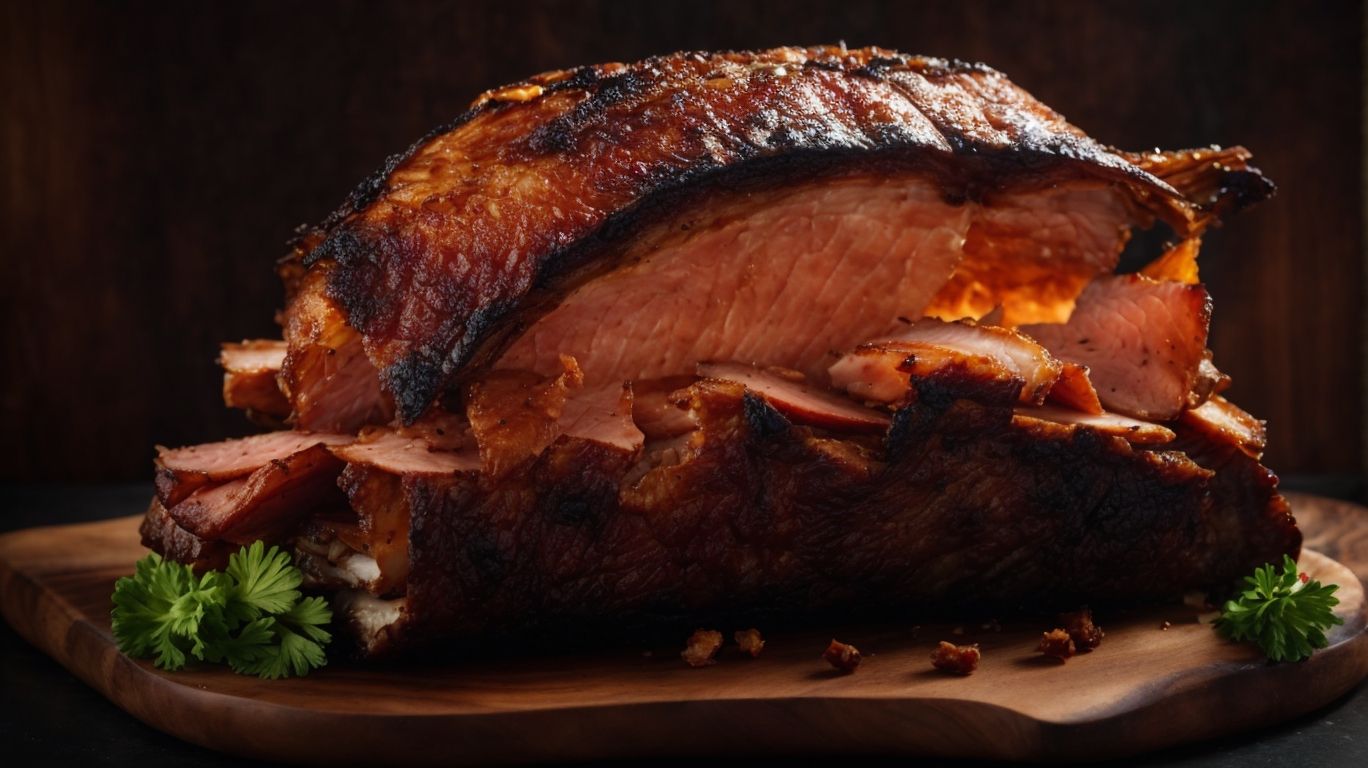
Credits: Poormet.Com – Charles Nelson
To achieve the perfect Lechon Belly, consider tips such as ensuring proper marination, monitoring cooking temperatures, and allowing sufficient resting time for the flavors to meld before serving.
Plus these key preparation steps, another crucial aspect in cooking the best Lechon Belly is to make sure the skin is crispy and crackling, creating that delightful crunch with every bite. Keeping the meat moist and tender is essential; therefore, basting the Lechon Belly regularly during the cooking process helps retain its succulence and juiciness. Experimenting with different herb and spice blends in the marinade can elevate the flavors, adding depth and complexity to the dish.
How to Serve and Enjoy Lechon Belly?
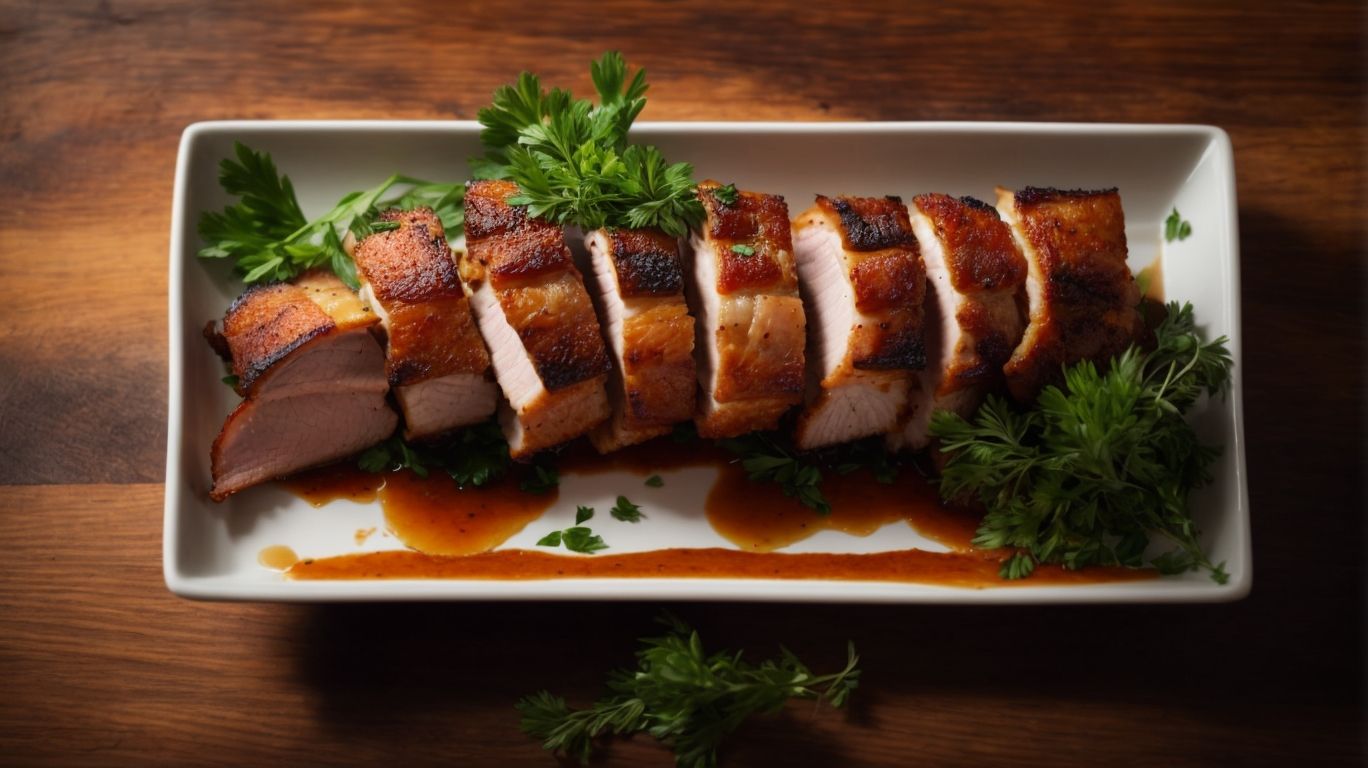
Credits: Poormet.Com – Vincent Roberts
Serve Lechon Belly hot and crispy, accompanied by traditional condiments like Sawsawan and Asin for a complete dining experience that celebrates the rich flavors of this beloved Filipino dish.
When serving Lechon Belly, place the golden brown slices on a large platter adorned with fresh herbs and sliced lemons to enhance the visual appeal. Pwede ka na mag-Lechon Belly with a side of fragrant steamed rice or garlic fried rice for a fulfilling meal. For condiment pairings, offer spicy vinegar, soy sauce with calamansi, or Mang Tomas sauce to elevate the taste profile.
In Filipino dining traditions, Lechon Belly is often the centerpiece of festive occasions like fiestas, birthdays, and weddings, symbolizing abundance and joy. Guests are encouraged to enjoy the crackling skin and tender meat with their hands, creating a communal and joyous atmosphere.
Frequently Asked Questions
How can I cook lechon belly without an oven?
There are several ways to cook lechon belly without an oven. You can use a slow cooker, a grill, a stovetop, or even an air fryer. It all depends on your preference and the equipment you have available.
Can I use a slow cooker to cook lechon belly?
Yes, a slow cooker is a great option for cooking lechon belly without an oven. It allows for a slow and even cooking process, resulting in tender and flavorful meat.
How do I cook lechon belly on a grill?
To cook lechon belly on a grill, you will need to wrap it in foil and place it on the grill over indirect heat. This will allow the meat to cook slowly and evenly. You can also use a rotisserie attachment for a more authentic lechon experience.
Can I cook lechon belly on a stovetop?
Yes, you can cook lechon belly on a stovetop using a large pan or wok. Simply sear the meat on all sides, then add some liquid (such as broth or vinegar) and cover the pan to let it simmer until the meat is tender.
Is it possible to cook lechon belly in an air fryer?
Yes, you can cook lechon belly in an air fryer for a healthier alternative. Just make sure to marinate the meat beforehand and place it in the fryer basket in a single layer for even cooking.
What is the best way to ensure a crispy skin on lechon belly without using an oven?
To achieve a crispy skin on lechon belly without using an oven, you can use a kitchen torch to lightly char the skin. You can also finish the cooking process on a grill or broil it in the oven for a few minutes.

